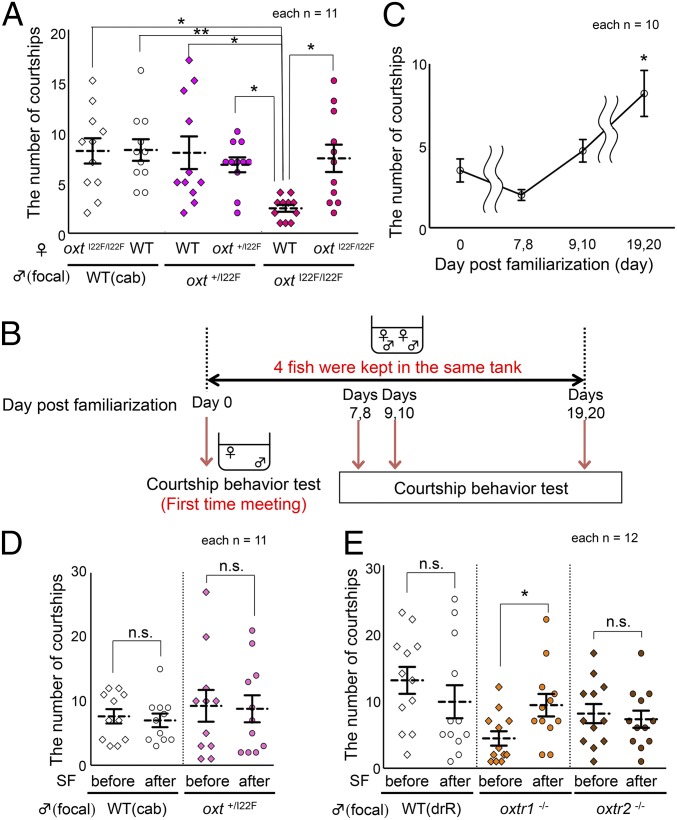Fig. 2.
Courtship behavior of oxt and oxtrs mutant males toward unfamiliar or familiar females. (A) Males and females with the same genotype were group reared from birth, i.e., socially familiarized for a long period of time. Neither female genotype nor SF influenced the number of courtship behaviors in WT and oxt+/I22F males (pink). In contrast, oxtI22F/I22F males (dark pink) exhibited courtship behaviors toward WT females less frequently than toward oxtI22F/I22F females. Mean ± SEM, n = 11 per group, Kruskal–Wallis: Steel–Dwass’s post hoc **P < 0.01, *P < 0.05. (B) Procedure for assessing the effect of social familiarization on courtship behavior in oxtI22F/I22F males. oxtI22F/I22F males and WT females were introduced for the first time during the courtship behavior test (day 0) and then two oxtI22F/I22F males and two WT females were kept in the same tank (familiarization) for 20 d. (C) The number of courtship behaviors of oxtI22F/I22F males toward unfamiliar WT females significantly increased following 19–20 d of SF. Mean ± SEM, n = 10 per group, Kruskal–Wallis: Steel’s post hoc: *P < 0.05 vs. “0 day post familiarization”. (D) WT and oxt+/I22F (pink) males exhibited courtship behavior toward familiarized WT females to the same extent as toward unfamiliar WT females. Mean ± SEM, n = 11 per group, Mann–Whitney U test. (E) WT and oxtr2−/− (brown) males exhibited courtship behavior toward familiarized WT females to the same extent as toward unfamiliar WT females. However, the number of courtship behaviors of oxtr1−/− males (orange) toward unfamiliar WT females was significantly lower than that toward familiarized females. Mean ± SEM, n = 12 per group, Mann–Whitney U test: *P < 0.05; n.s., not significant.  , female;
, female;  , male.
, male.

